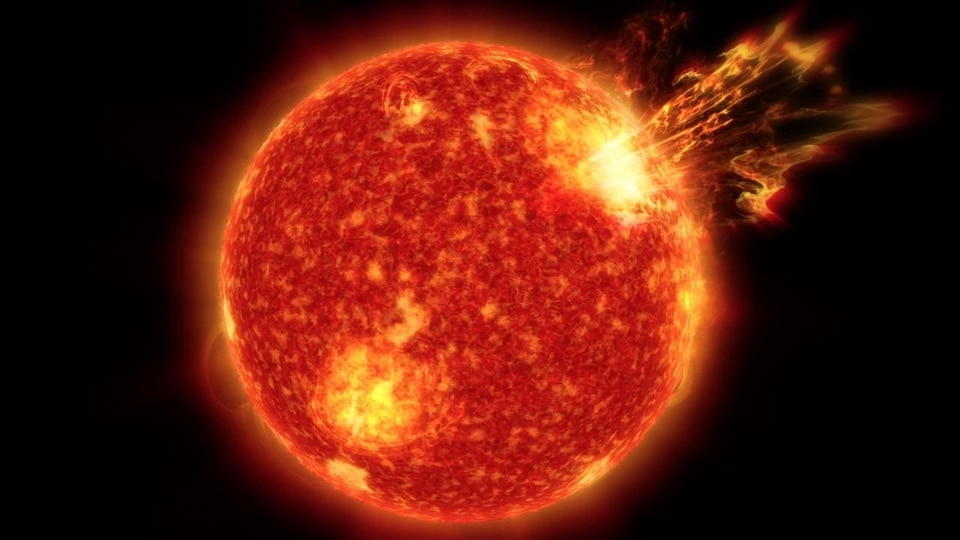Solar storm ALERT issued as multiple CMEs charge towards Earth today
As per NOAA, multiple minor CMEs could collectively launch a solar storm attack on the Earth today, May 3. Know the possible consequences from this event.






 View all Images
View all ImagesYesterday, we were discussing the possibility of a solar storm this week as a result of a solar flare eruption on the sunspot AR3288. The early projections revealed that not enough coronal mass ejection (CME) had been released to spark a solar storm on Earth. However, something interesting happened. With the sunspot being in a constant state of instability, multiple flares occurred, all of which released faint CMEs, not capable of causing a solar storm by themselves. However, some of them have merged together to form a significantly stronger cloud. The National Oceanic and Atmospheric Administration (NOAA) forecasters have predicted that the storm can strike later today.
According to a SpaceWeather report, “NOAA forecasters say that minor G1-class geomagnetic storms are possible on May 2nd and 3rd due to the collective effect of several faint CMEs that left the sun over the weekend. They were launched into space by multiple eruptions from sunspot AR3288 and nearby magnetic filaments. A series of near misses and weak impacts could add up to high-latitude auroras in the next 48 hours”.
Dangerous solar storm is headed for the Earth
This particular effect of CME clouds to absorb the ones in their front and to merge the overall magnetic field is known as the cannibal CME effect. Since cannibal CME devours multiple clouds, their overall intensity is extremely high. When they finally strike the Earth, the combined strength of the CME particles easily breaks open the Earth's magnetic field and causes powerful solar storms.
Such storms can do more damage than normal. They can damage small satellites, impact mobile networks, GPS, and even pose a threat to ground-based electronics and power grids by increasing the magnetic potential by huge amounts.
With the peak of the current solar cycle being pushed by as much as a year, astronomers believe things are going to ramp up for the Sun. In April, the average number of sunspots was 96, which exceeded the official projections for the 26th month in a row. The month also witnessed the worst solar storm in six years. In the months to come, we might have to deal with even stronger storms.
How NASA SOHO watches the Sun
NASA's SOHO (Solar and Heliospheric Observatory) is a satellite that was launched on December 2, 1995. It is a joint project between NASA and the European Space Agency (ESA) to study the sun, its atmosphere, and its effects on the solar system. Equipped with 12 scientific instruments, such as Extreme Ultraviolet Imaging Telescope (EIT), Michelson Doppler Imager (MDI), LASCO (Large Angle and Spectrometric Coronagraph) and others, SOHO captures images of the sun's corona, measures the velocity and magnetic fields of the sun's surface, and observes the faint corona around the sun.
Catch all the Latest Tech News, Mobile News, Laptop News, Gaming news, Wearables News , How To News, also keep up with us on Whatsapp channel,Twitter, Facebook, Google News, and Instagram. For our latest videos, subscribe to our YouTube channel.
































